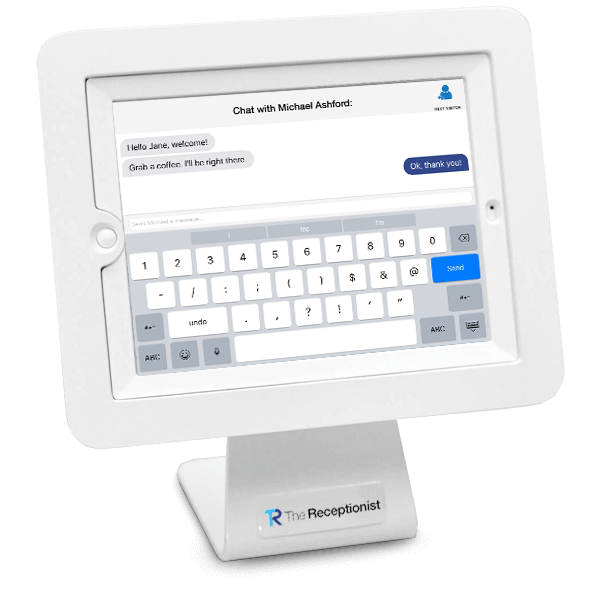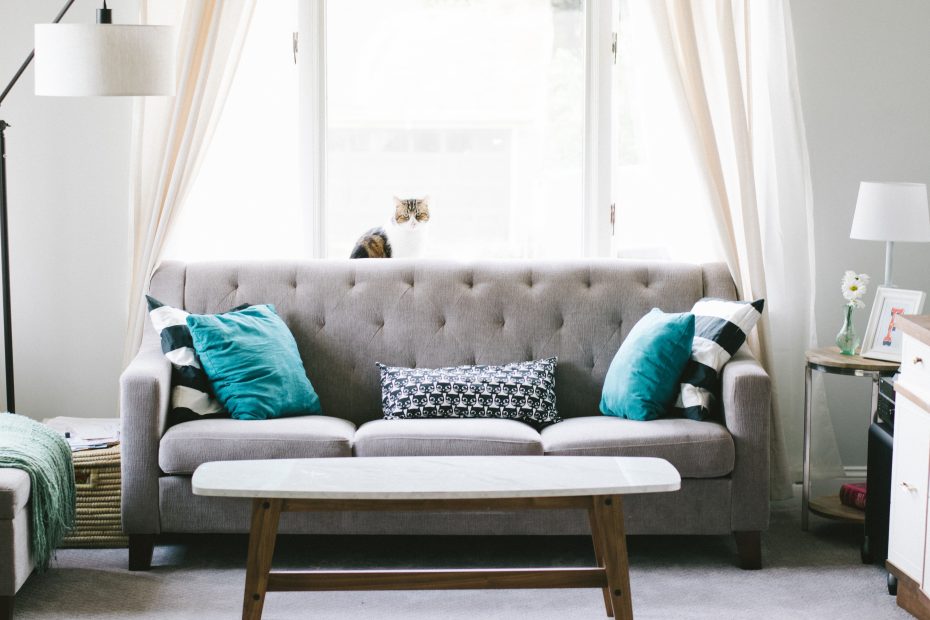If a host has done his job properly, his guests feel right at home — like they belong.
You’ve probably experienced this feeling yourself when you’ve visited friends and family who love entertaining. When you’re at their homes, you feel at ease. You don’t hesitate to ask for anything you might need or want.
Welcoming visitors into your office shouldn’t be so different. Office visitors won’t get a warm embrace or a glass of wine like they would at someone’s home, but the end goal is similar: to make guests feel at ease and make sure they have everything they need.
Going above and beyond for your office visitors as soon as they walk in can set your organization apart from others. Making office visitors comfortable sends a clear message that your organization values empathy and knows how to treat people well.
Sending this message is always important, but it can be particularly important when it comes to impressing job candidates and potential clients.
Here are four easy ways to make your office visitors more comfortable.
Greet visitors warmly
Picture yourself showing up to a party at a friend’s house. When your host opens the door, she’ll make eye contact with you, smile, and greet you by name, right?
You can make office visitors feel the same way by greeting them similarly. The key is to make them feel like they were expected and that you’re happy to see them.
To ensure that office guests are always greeted warmly, you’ll need three things in place.
- A staffed and attentive front desk – An empty front desk confuses visitors. Even if a full-time employee usually sits in the lobby, you’ll need a plan for when those administrators need a break, get busy, or aren’t available for another reason. This backup plan can involve designating another employee to step in as necessary, or even setting up a visitor self-check-in kiosk so visitors can get started on their own. Related: 6 Ways Business Receptions Can Get Awkward (And How to Avoid Them)
- A specific greeting protocol – Ideas about what it means to “be friendly” can vary a lot from one person to the next. It helps to make expectations very clear for employees. For example, you can specify that receptionists should smile and make clear eye contact when visitors arrive. You may even specify a standard greeting, such as “Good morning! Welcome to Company Name” — similar to the one you use for phone etiquette.
- A culture that respects the role of admin staff – No matter how specific you are with your greeting instructions, an unhappy or overwhelmed administrator won’t be able to muster much enthusiasm for visitors. That’s why it’s critical to avoid overloading your administrative staff. Don’t give them too much work that will be derailed by frequent interruptions, or work that will keep them on the phone when they should be receiving guests. Make sure they have somewhere besides the front desk to eat their lunch or take breaks so that guests don’t interrupt their time off. Related: Why Your Office Might Need a “Director of First Impressions”
When visitors come into your office, their primary goal is to get to their meeting, or accomplish the task they came to do. But they also have other needs.
Anticipate common needs
Many of them will need to use the restroom, for example, or want to charge their personal devices while they wait for their host. They may also be grateful for a drink of water or a cup of coffee if they’re offered one. If you’re in a multi-tenant facility, guests may need instructions on how to get to the office they’re looking for.

It’s your job to make it easier for visitors to get everything they need.
Your employees can instruct visitors verbally, or you can make sure things like phone charging stations, building directories, and refreshment options (or signs directing visitors to them) are placed prominently in the lobby area.
Make the lobby as inviting as possible
Friendliness and amenities are important, but a big component of what really puts visitors at ease is the room itself. The lobby must look and feel like an inviting place.
This starts with aesthetics. The lobby should be clean, well-designed and on-brand. For more on how to make that happen, check out our blog post 5 Ways to Style a Beautiful Reception Area.
There’s also the physical side of comfort. Namely, visitors need a comfortable place to sit once they check in.
Good hosts will make sure there are always enough seats in the lobby to accommodate all of the visitors waiting to be seen, and that those seats are clean and comfortable. You may want to look at the data from your visitor management software to analyze how many visitors come into your office throughout the day, week, and year so you can be prepared.
Finally, adding a few other soothing sensory experiences, such as a fresh scent or calming music, can work to make a space even more inviting. For more on how to integrate sensory experiences in your lobby, read How to Make an Impression That Office Visitors Will Remember.
Connect visitors to their hosts more quickly
You can make your lobby an inviting space where visitors won’t mind spending a bit of time waiting. But no matter how comfortable your lobby is, your visitors tend to prefer to spend as little time there as possible.
No matter how comfortable your lobby is, your visitors tend to prefer to spend as little time there as possible. #receptionistapp Click To TweetThey want to go on to their appointments and move along with their day. And they certainly won’t feel comfortable if they get the feeling that their host wasn’t expecting them or that they’ve been forgotten about.
If at all possible, your front desk staff should be able to keep guests posted about their appointment status as they wait.
One easy way to make this happen is to let visitors chat with their hosts directly through the visitor check-in system. For example, when visitors log in with The Receptionist’s tablet-based system, hosts are notified automatically through SMS, email, or Slack message. They can then send visitors a message directly through the tablet.

The Receptionist even lets you set up notification preferences so that hosts can get periodic reminders of their visitors’ arrival. The system can also be set up to notify other employees if the original employee doesn’t respond within a specified time period.
If you don’t have a program like The Receptionist, your front desk staff should understand that their responsibilities for visitors’ comfort don’t end when the visitor is checked in. Administrators should try to keep visitors updated, and in the event of a delay, they should apologize on behalf of the host.
Finally, if you’d like to try The Receptionist, you can click here and enter your email to start your free 14-day trial. Or, you can contact us to request a personalized demo.
Share this Post

